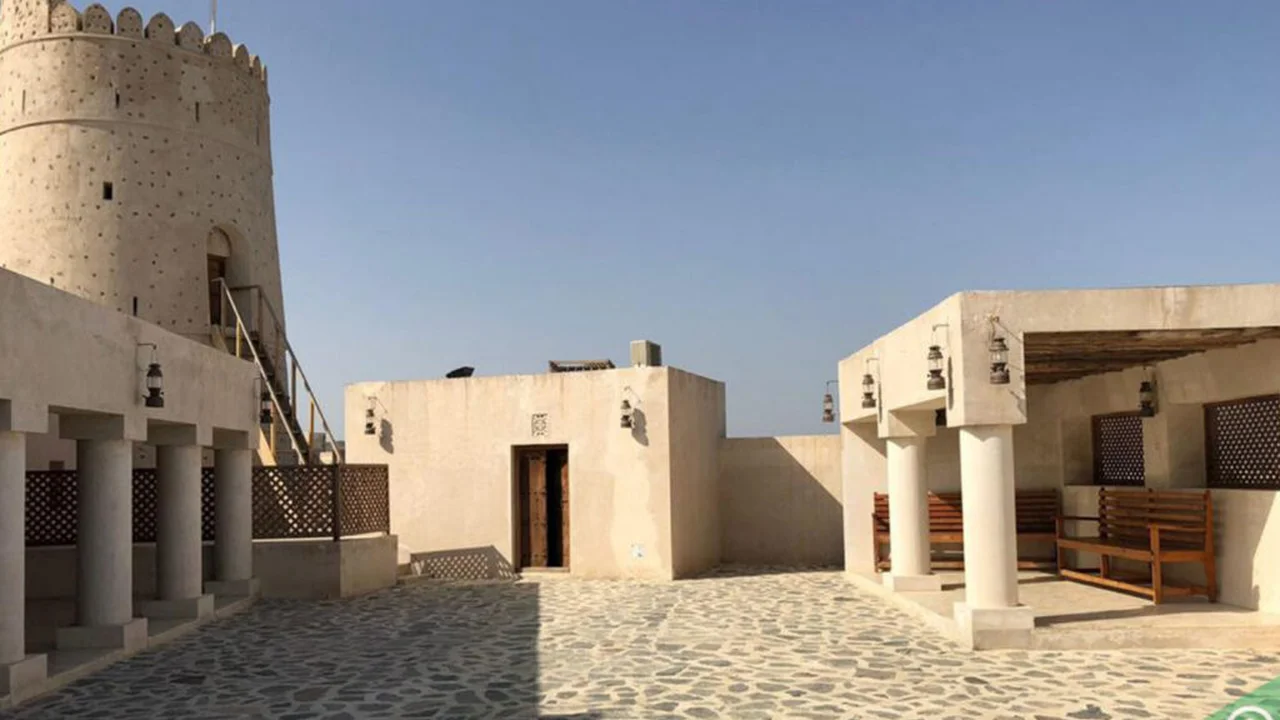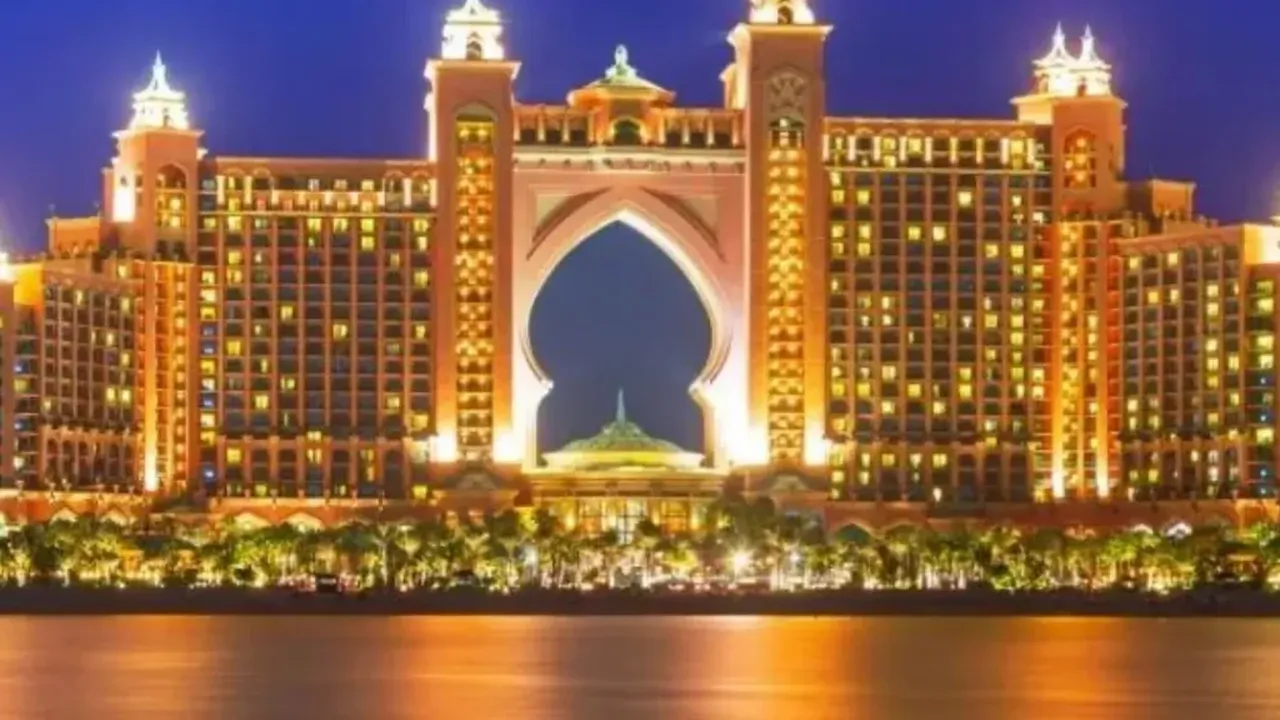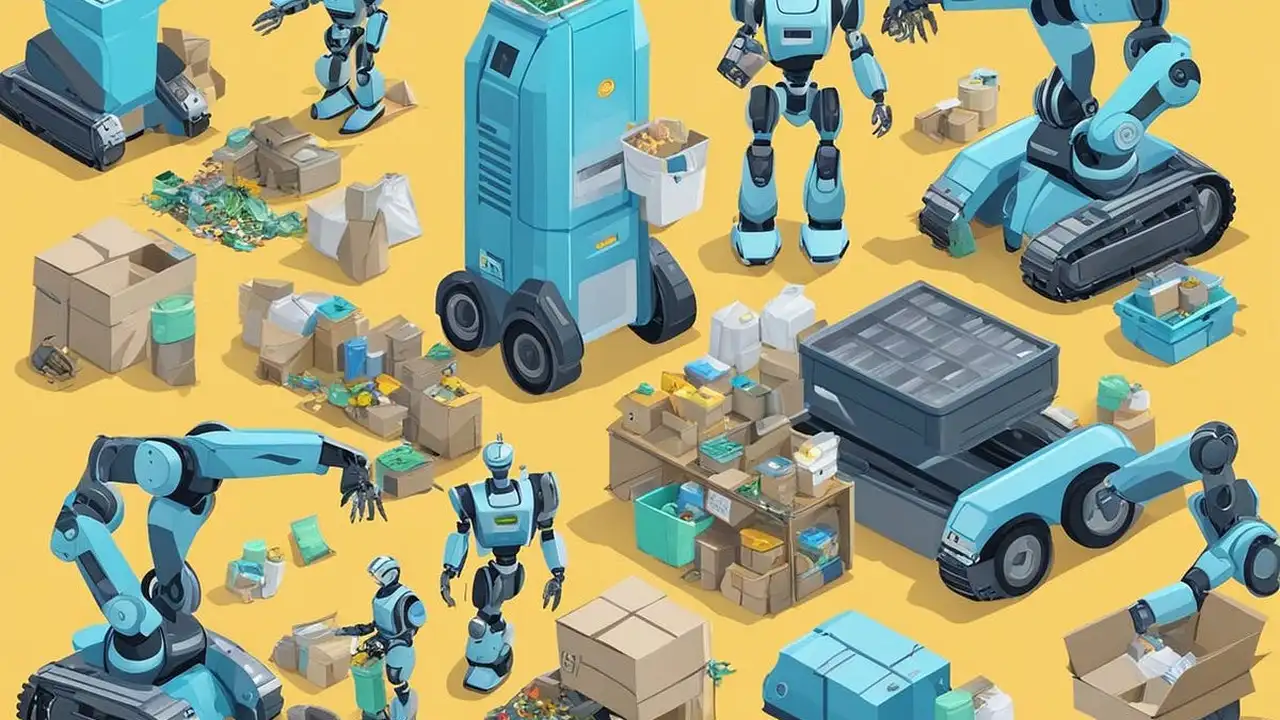7 Hidden Gems to Discover in Sharjah's Old City

Exploring the Concept of Lifestyle Tourism in Smart Cities
What exactly is lifestyle tourism, and how does it fit into the narrative of future cities? It's more than just visiting landmarks; it's about immersing yourself in the local culture, experiencing authentic moments, and discovering how people live, work, and play in these innovative urban environments. Think of it as a deep dive into the city's soul, uncovering its unique character and rhythms.
In the context of smart cities, lifestyle tourism takes on a whole new dimension. Imagine cities designed with sustainability, connectivity, and quality of life at their core. These are cities where technology enhances the human experience, creating opportunities for enriching and transformative travel. We're talking about interactive art installations, personalized travel recommendations based on your interests, and seamless transportation systems that make exploring a breeze. The focus shifts from simply seeing the sights to truly living the city.
Consider a future city with vertical farms integrated into skyscrapers. A lifestyle tourist might take a tour, learning about sustainable agriculture and even participating in a cooking class featuring locally grown produce. Or imagine a city with a thriving maker scene, where visitors can attend workshops and create their own unique souvenirs. These are the kinds of experiences that define lifestyle tourism in future cities – authentic, engaging, and deeply connected to the local community.
The Rise of Sustainable Tourism Initiatives in Urban Centers
Sustainability is no longer a buzzword; it's a necessity, especially in the face of climate change. And it's playing an increasingly important role in shaping the future of tourism. Sustainable tourism initiatives are designed to minimize the negative impact of tourism on the environment and local communities while maximizing its positive contributions. This includes everything from reducing carbon emissions and conserving resources to supporting local businesses and preserving cultural heritage.
Many urban centers are leading the way in sustainable tourism, implementing innovative strategies to reduce their environmental footprint. For example, some cities are investing in renewable energy sources, such as solar and wind power, to power their tourism infrastructure. Others are promoting public transportation and cycling to reduce traffic congestion and air pollution. Still others are working to protect natural areas and biodiversity within their city limits.
One compelling example is the city of Copenhagen, Denmark, consistently ranked as one of the most sustainable cities in the world. Copenhagen has invested heavily in cycling infrastructure, making it easy and enjoyable for tourists to explore the city on two wheels. The city also boasts a network of canals and waterways, which are used for transportation and recreation. And Copenhagen is committed to reducing its carbon emissions to zero by 2025.
Another example is Singapore, a city-state known for its innovative approach to urban planning. Singapore has implemented a number of sustainable tourism initiatives, including the development of green spaces, such as Gardens by the Bay, and the promotion of eco-friendly hotels and restaurants. The city-state is also investing in smart technologies to improve resource management and reduce waste.
Immersive Cultural Experiences in Futuristic Cityscapes
Future cities are not just about sleek skyscrapers and advanced technology; they are also about vibrant cultures and unique experiences. Immersive cultural experiences allow tourists to connect with the local community, learn about its history and traditions, and discover its artistic expressions. These experiences can range from attending traditional festivals and visiting historical sites to participating in art workshops and sampling local cuisine.
Imagine visiting a future city where holographic projections bring historical events to life. Or participating in a virtual reality tour that allows you to explore ancient ruins from the comfort of your hotel room. These are just a few examples of how technology can enhance cultural experiences in future cities.
One area where immersive cultural experiences are thriving is in the realm of gastronomy. Future cities are likely to see a rise in innovative food concepts that blend technology and tradition. For example, you might visit a restaurant that uses 3D printing to create personalized meals based on your dietary needs and preferences. Or you might participate in a cooking class that teaches you how to prepare traditional dishes using locally sourced ingredients.
Another exciting development is the rise of interactive art installations. These installations invite tourists to engage with art in a meaningful way, blurring the lines between spectator and participant. For example, you might encounter an interactive sculpture that responds to your movements or a digital mural that changes based on your social media activity.
Urban Exploration Redefined Discovering Hidden Gems in Smart Cities
Urban exploration is the art of discovering hidden gems and uncovering the secrets of a city. In the context of smart cities, urban exploration takes on a new level of intrigue. These cities are often designed with hidden spaces, secret gardens, and underground tunnels waiting to be discovered. Urban explorers can use technology to their advantage, using GPS and augmented reality apps to navigate the city and uncover its hidden treasures.
One of the key tools for urban explorers in smart cities is the smartphone. With a smartphone, you can access maps, information, and even augmented reality experiences that reveal hidden layers of the city. You can also use social media to connect with other urban explorers and share your discoveries.
Imagine using an augmented reality app to uncover the history of a building as you walk past it. Or using a GPS-enabled map to locate a hidden park tucked away in a forgotten corner of the city. These are the kinds of experiences that make urban exploration in smart cities so exciting.
However, it's important to remember that urban exploration should always be conducted responsibly and respectfully. Avoid trespassing on private property, and be mindful of the environment. Leave no trace behind, and always prioritize safety.
Smart Transportation Solutions Enhancing Tourist Experiences
Smart transportation solutions are revolutionizing the way people move around cities. These solutions include everything from electric vehicles and autonomous buses to ride-sharing services and bike-sharing programs. In the context of tourism, smart transportation solutions can enhance the tourist experience by making it easier, faster, and more convenient to explore the city.
Imagine arriving at a future city and being greeted by a fleet of autonomous taxis that can take you directly to your hotel. Or using a ride-sharing app to quickly and easily get around the city without having to worry about parking. These are just a few examples of how smart transportation solutions can improve the tourist experience.
One of the key benefits of smart transportation is that it can reduce traffic congestion and air pollution. Electric vehicles and autonomous buses produce zero emissions, helping to improve air quality and reduce the city's carbon footprint. Ride-sharing services and bike-sharing programs can also help to reduce traffic congestion by encouraging people to use alternative modes of transportation.
Another benefit of smart transportation is that it can make it easier for tourists to access remote or difficult-to-reach attractions. For example, a city might use drones to transport tourists to scenic viewpoints or use electric boats to provide access to islands or waterways.
The Role of Technology in Personalized Travel Recommendations
Technology is playing an increasingly important role in personalizing travel recommendations. By analyzing your preferences, interests, and past travel experiences, technology can provide you with customized recommendations for hotels, restaurants, activities, and attractions. This can help you to make the most of your trip and discover hidden gems that you might otherwise have missed.
Imagine using an AI-powered travel app that learns your preferences over time and provides you with increasingly relevant recommendations. Or using a virtual reality headset to preview a hotel room or experience an attraction before you book it. These are just a few examples of how technology can personalize travel recommendations.
One of the key technologies driving personalized travel recommendations is artificial intelligence (AI). AI algorithms can analyze vast amounts of data to identify patterns and predict your preferences. For example, an AI algorithm might analyze your social media activity, your past travel bookings, and your online reviews to determine your preferred travel style and recommend destinations that are likely to appeal to you.
Another important technology is location-based services (LBS). LBS can use your smartphone's GPS to determine your location and provide you with real-time recommendations for nearby attractions, restaurants, and shops. For example, if you're walking through a historic district, an LBS app might recommend a nearby museum or a cafe with a good reputation.
Luxury Accommodations and High-End Experiences in Future Cities
Future cities are likely to offer a wide range of luxury accommodations and high-end experiences. These accommodations might include opulent hotels with stunning views, private villas with personalized service, and even space-based resorts with zero-gravity activities. The high-end experiences might include private concerts, exclusive shopping tours, and personalized culinary adventures.
Imagine staying in a hotel room that can transform into a personalized oasis at the touch of a button. Or dining at a restaurant where the chef creates a customized tasting menu based on your dietary needs and preferences. These are just a few examples of the luxury accommodations and high-end experiences that future cities might offer.
One of the key trends driving the development of luxury accommodations in future cities is the increasing demand for personalized service. High-end travelers are no longer satisfied with generic experiences; they want accommodations and services that are tailored to their individual needs and preferences. This is driving hotels and resorts to invest in technologies that can personalize the guest experience, such as AI-powered concierge services and smart room controls.
Another trend is the increasing demand for sustainable luxury. High-end travelers are becoming more aware of the environmental impact of their travel choices and are seeking out accommodations and experiences that are environmentally responsible. This is driving hotels and resorts to adopt sustainable practices, such as using renewable energy, reducing waste, and supporting local communities.
The Future of Culinary Tourism Exploring Urban Food Innovations
Culinary tourism is the exploration of food and drink as a central part of travel. In future cities, culinary tourism will be revolutionized by urban food innovations. Vertical farms, lab-grown meats, and 3D-printed meals are just a few of the innovations that will shape the future of culinary tourism.
Imagine taking a tour of a vertical farm located inside a skyscraper, learning about sustainable agriculture, and then enjoying a meal prepared with the freshly harvested produce. Or dining at a restaurant that serves lab-grown meat, experiencing the future of protein consumption. These are just a few examples of how urban food innovations will transform culinary tourism.
One of the key drivers of urban food innovations is the need to feed a growing global population in a sustainable way. As cities become more crowded and resources become more scarce, it will be increasingly important to find innovative ways to produce food locally and efficiently. This is driving investment in technologies such as vertical farming, lab-grown meat, and 3D food printing.
Another driver is the increasing demand for personalized and customized food experiences. Consumers are increasingly interested in knowing where their food comes from, how it is produced, and what ingredients it contains. This is driving the development of technologies that can personalize the food experience, such as 3D food printing and AI-powered recipe recommendations.
Wellness Retreats and Urban Sanctuaries Rejuvenating Body and Mind
Wellness retreats and urban sanctuaries are becoming increasingly popular as people seek ways to escape the stresses of modern life. In future cities, these retreats and sanctuaries will be integrated into the urban fabric, providing a haven for relaxation and rejuvenation.
Imagine visiting a rooftop garden that offers yoga classes and meditation sessions. Or spending a day at a spa that uses advanced technologies to personalize your wellness experience. These are just a few examples of how wellness retreats and urban sanctuaries will be integrated into future cities.
One of the key trends driving the growth of wellness retreats and urban sanctuaries is the increasing awareness of the importance of mental and physical health. People are increasingly recognizing the need to take care of their bodies and minds, and they are seeking out experiences that can help them to relax, de-stress, and rejuvenate.
Another trend is the increasing demand for personalized and customized wellness experiences. Consumers are increasingly interested in finding wellness solutions that are tailored to their individual needs and preferences. This is driving the development of technologies that can personalize the wellness experience, such as wearable sensors and AI-powered wellness coaches.
Consider the "Serenity Pod", a personal relaxation device priced at $5,000. It utilizes sound and light therapy to induce a state of deep relaxation. A comparative analysis against the "MindSpa" (priced at $3,000, focusing on binaural beats) showcases the Serenity Pod's comprehensive approach. Use cases include stress reduction, improved sleep, and enhanced focus. Details: Example Serenity Pod Link.
Navigating the Ethical Considerations of Tourism in Advanced Technological Societies
As tourism becomes increasingly intertwined with advanced technologies, it's crucial to consider the ethical implications. Data privacy, algorithmic bias, and the potential for over-tourism are just a few of the ethical challenges that need to be addressed.
Imagine a future where your every move is tracked and analyzed by tourism companies. Or a future where algorithms determine which tourists get access to the best experiences. These are just a few of the ethical challenges that need to be addressed as tourism becomes more technologically advanced.
One of the key ethical considerations is data privacy. Tourism companies collect vast amounts of data about their customers, including their travel preferences, their spending habits, and their location data. It's important to ensure that this data is used responsibly and ethically, and that customers have control over how their data is used.
Another ethical consideration is algorithmic bias. Algorithms are used to make a wide range of decisions in the tourism industry, from recommending hotels and restaurants to setting prices. It's important to ensure that these algorithms are fair and unbiased, and that they don't discriminate against certain groups of people.
Over-tourism is another ethical challenge. As more and more people travel, popular destinations are becoming overcrowded, leading to negative impacts on the environment and local communities. It's important to find ways to manage tourism sustainably and to ensure that it benefits both tourists and local residents.
The Future of Souvenirs Personalized and Sustainable Keepsakes
Souvenirs are a traditional part of the travel experience. In future cities, the concept of souvenirs will evolve to become more personalized and sustainable. Think 3D-printed replicas of architectural landmarks, personalized digital art created with local artists, and locally sourced, handcrafted items.
Imagine designing your own souvenir using a 3D printer, creating a miniature replica of your favorite building. Or commissioning a digital artwork from a local artist, capturing the essence of your travel experience. These are just a few examples of how souvenirs will become more personalized and sustainable in future cities.
One of the key trends driving the evolution of souvenirs is the increasing demand for unique and authentic experiences. Travelers are no longer satisfied with mass-produced souvenirs that can be found anywhere. They want souvenirs that are meaningful, that tell a story, and that reflect their personal connection to the destination.
Another trend is the increasing awareness of the environmental impact of souvenirs. Travelers are becoming more conscious of the need to reduce waste and to support sustainable practices. This is driving the demand for souvenirs that are made from recycled materials, that are locally sourced, and that are ethically produced.
For example, consider "Memory Weaver", a service offering personalized souvenirs generated from your trip photos and GPS data, priced at $50-$200 depending on complexity. Compared to traditional mass-produced souvenirs, Memory Weaver offers unique, eco-friendly keepsakes. Use cases include commemorating special trips, gifting personalized memories. Example Memory Weaver Link provides details.
:max_bytes(150000):strip_icc()/277019-baked-pork-chops-with-cream-of-mushroom-soup-DDMFS-beauty-4x3-BG-7505-5762b731cf30447d9cbbbbbf387beafa.jpg)






